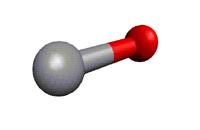|
The initial experimental measurements were taken from
(1) G. Klapper, F. Lewen, R. Gendriesch, S. P. Belov, and G. Winnewisser
2000, J. Mol. Spectrosc., 201, 124;
covering J" = 0 – 8 and 16 and 17.
Transitions up to J" = 5 display resolved 13C
hyperfine structure (HFS) splitting.
The higher frequency transitions (> 2 THz; J" =
18, 24, 25, 27, 29) from
(2) L. R. Zink, P. Natale, F. S. Pavone, M. Prevedelli,
K. M. Evenson, and M. Inguscio,
1990, J. Mol. Spectrosc., 143, 304,
were also used in the fit.
With respect to the first entry from April 2000,
more accurate low-J data (up to 4 – 3 near 441 GHz)
were included which come from
(3) G. Cazzoli, C. Puzzarini, and A. V. Lapinov,
2004, Astrophys. J., 611, 615,
replacing the corresponding data from (1).
With respect to the second entry from Nov 2006,
J" = 22 and 23 frequencies were added from
(4) J. C. Pearson, B. J. Drouin, A. Maestrini, I. Mehdi, J. Ward,
R. H. Lin, S. Yu, J. J. Gill, B. Thomas, C. Lee, G. Chattopadhyay,
E. Schlecht, F. W. Maiwald, P. F. Goldsmith, and P. Siegel,
2011, Rev. Sci. Instrum., 82, Art. No. 093105.
The transition frequencies should be quite reliable up to
about 4 THz. Great caution is advised above 5 THz.
Please note that the partition function still only refers
to the ground vibrational state.
The HFS splitting caused by the 13C nucleus
may be relevant in quiescent sources for low values
of J. Therefore, a separate
hyperfine calculation is provided for J" up to 2.
NOTE: The partition function
does take into account the spin multiplicity
of the 13C nucleus !
The dipole moment and its centrifugal distortion corrections
were taken from
(5) D. Goorvitch
1994, Astrophys. J. Suppl. 95, 535.
|
